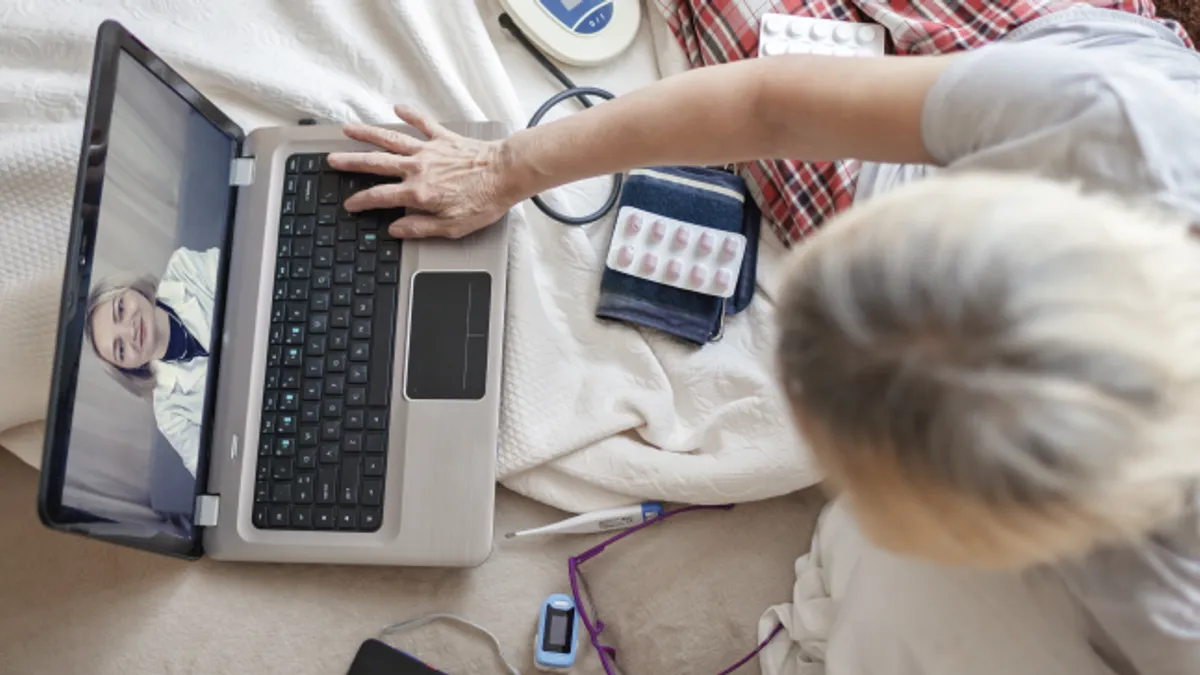Dive brief:
- Telehealth visits for COVID-19 diagnoses fell in February, mirroring the sharp decline in new cases of the virus reported to the Centers for Disease Control and Prevention after January's omicron-driven peak, according to Fair Health's monthly telehealth claims tracker.
- Overall telehealth use also slowed, falling 9.3% in February across the country. Virtual visits were 4.9% of all medical claim lines, down from 5.4% in the prior month.
- With declining COVID-19 cases generating fewer telehealth sessions, mental health conditions accounted for a greater share of all diagnoses conducted via virtual platforms, according to the Fair Health data released Monday. Mental health diagnoses rose to about 64% of telehealth claims, up from 60% in January.
Dive Insight:
Supported by improved reimbursement and greater accessibility for patients, telehealth has remained a popular alternative to in-person doctor visits in the third year of the pandemic. Still, demand has fluctuated, increasing during COVID-19 surges and easing as case numbers ebb.
This pattern held largely consistent during the winter, when COVID-19 ranked among the top five conditions for telehealth visits nationally in December and January as omicron spread.
But by February, with the virus on the wane again, Fair Health reported that COVID-19 was no longer a top five telehealth diagnosis. Overall telehealth use also declined, following three consecutive months of growth, with remote visits down across all U.S. regions.
"The drop in telehealth utilization was likely due to diminishing concerns about COVID-19 infection, which led more patients to return to in-person healthcare services," the nonprofit said.
The survey's top diagnoses in February, after mental health conditions, were acute respiratory diseases and infections, developmental disorders, joint/soft tissue diseases and issues, and substance use disorders.
The most common provider specialty represented in remote visits in February was social worker, accounting for more than 31% of telehealth claims, followed by primary care physician, psychiatrist, psychologist and primary care nonphysician. Psychotherapy is the most common telehealth service that social workers provide, reflecting the growing share of mental health conditions among online diagnoses, Fair Health said.
A recent survey from Willis Towers Watson showed that 87% of employers viewed improving mental health benefits for their workers as a top priority over the next two years. The survey found a link between the shift to remote work during the pandemic and more mental health struggles among employees and their families. Virtual care is likely to become a long-term feature of employers' healthcare strategies after the pandemic, according to that survey.














